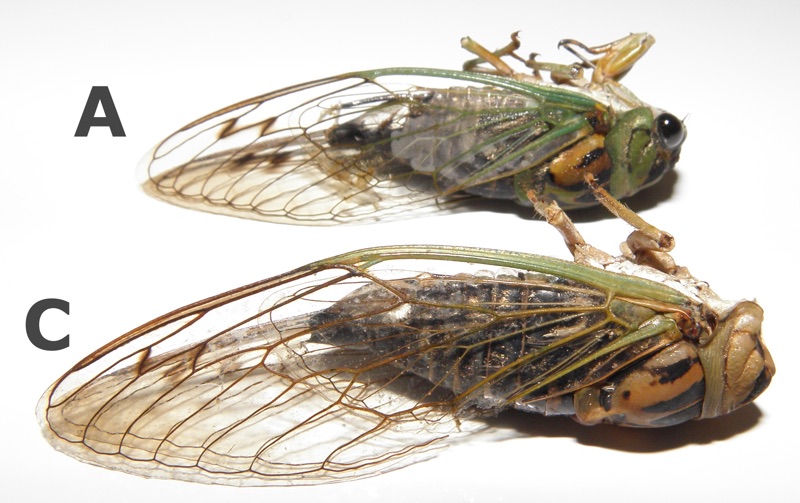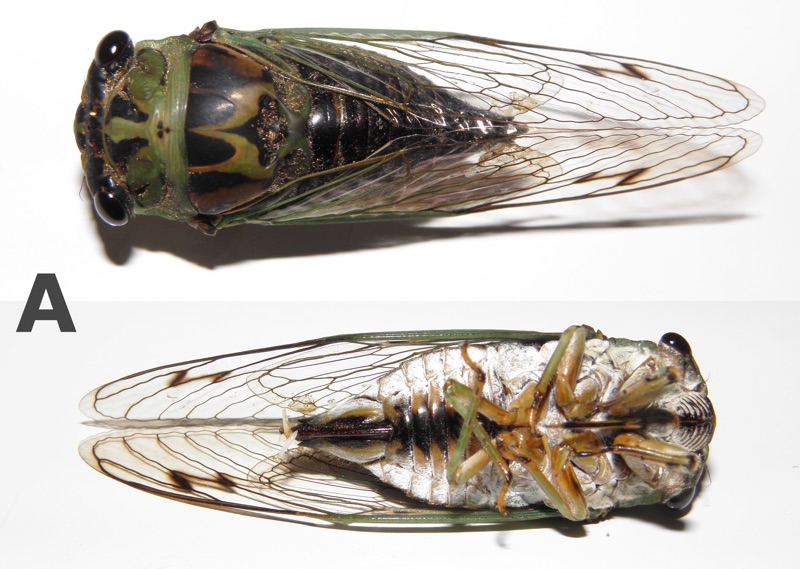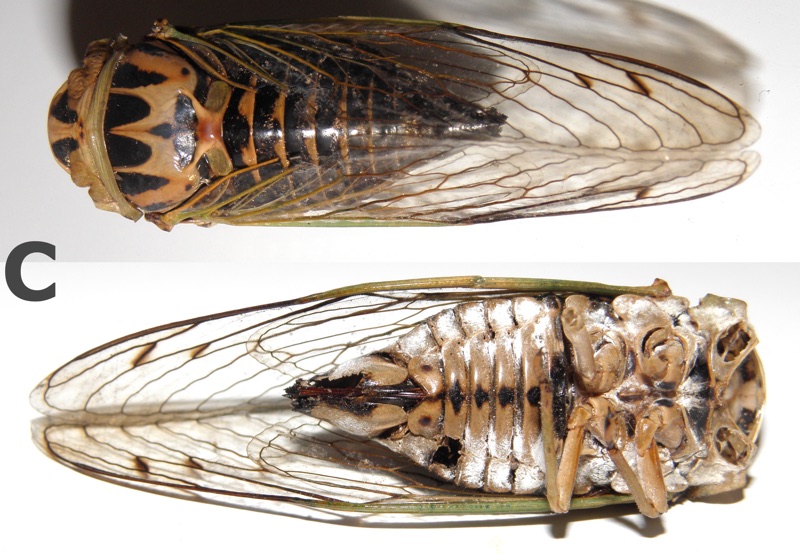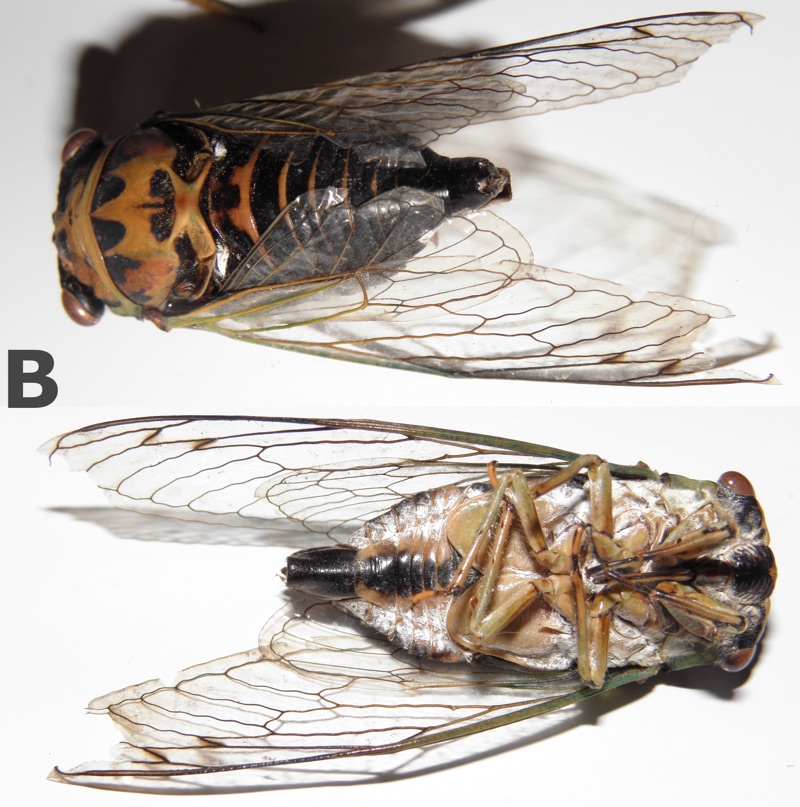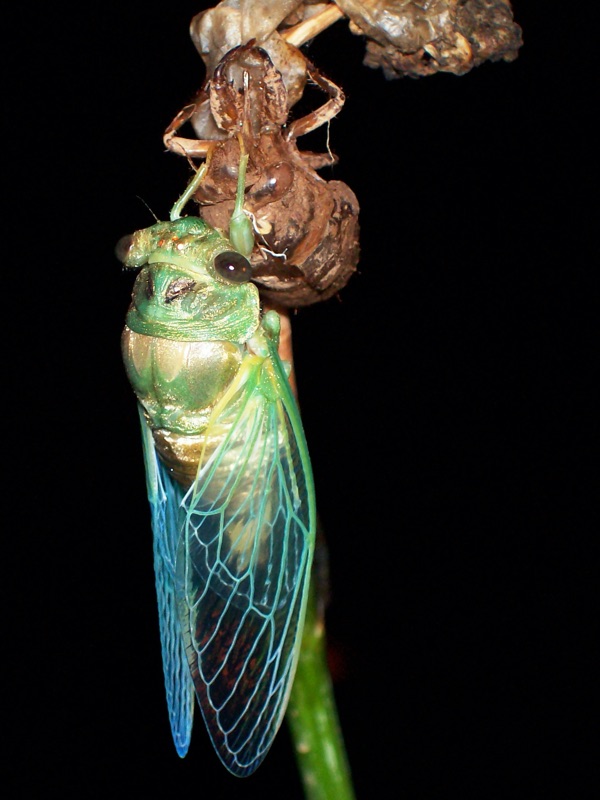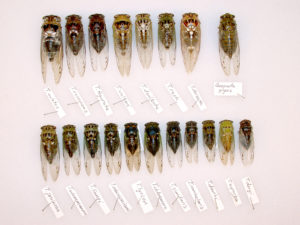
Back in the day — 1970s and earlier — people would sharpen scissors, knives, and tools rather than throw them out and buy new ones. A scissors grinder was a person who would sharpen your scissors for you. They used an abrasive wheel to grind your scissors sharp. The sound of the metal of a scissor gliding across the sharpening stone made a unique sound — a sound used to describe the sound some cicadas make.
These days (2017 when I wrote this article) scissors grinders are not a common sight or sound, but a few cicadas still have a common name referring to the scissor grinding days of yore. A few, but not all, are also Dusk Singers.
Neotibicen latifasciatus aka Coastal Scissor(s) Grinder Cicada. Found in FL, MD, NJ, NC, VA. Season: June – Fall. A day singer found along the coast.
N. latifasciatus Call*:
Neotibicen pruinosus pruinosus aka Scissor(s) Grinder. Found in AL, AR, CO, IL, IN, IA, KS, KY, LA, MI, MN, MS, MO, NE, OH, OK, SC, SD, TN, TX, VA, WV, WI. Season: June – September. Neotibicen pruinosus fulvus aka Pale Scissor(s) Grinder Cicada. Found in: KS, OK. Season: June – September. A Dusk Singer, very much like N. winnemanna but predominately west of the Appalachian mountains.
N. pruinosus Call*:
Neotibicen winnemanna aka Eastern Scissor(s) Grinder. Found in AL, DE, DC, GA, KY, LA, MD, MS, NC, NJ, PA, SC, TN, TX, VA, WV. Season: June – Fall. A Dusk Singer, very much like N. pruinosus but predominately east of the Appalachian mountains.
N. winnemanna Call*:
It’s worth mentioning two similar cicadas, that don’t bear the “Scissors Grinder” name, but either sound similar or hybridize with Scissor Grinders.
Neotibicen robinsonianus aka Robinson’s Annual Cicada or Robinson’s Cicada. This cicada’s call is similar to Scissor Grinders in rhythm, but it has a duller sound/lower pitch (IMHO). Maybe it should be called the “Dull Scissor Grinder” (that is a joke). Found: AL, AR, DC, FL, GA, IN, KS, MD, MS, MO, NC, OH, PA, TN, TX, VA. Season: June-Fall.
N. robinsonianus Call*:
Neotibicen linnei aka Linne’s Cicada sounds nothing like the Scissors Grinders, but it is known to hybridize with Scissor Grinders. Found: AL, AR, CT, DE, DC, FL, GA, IL, IN, IA, KS, KY, LA, ME, MD, MA, MI, MN, MS, MO, NE, NJ, NY, NC, OH, ON, PA, SC, TN, VT, VA, WV, WI. Season: June – fall.
You might hear a hybrid Scissors Grinder with a call that features part of an N. Linnei call!
A pure (non hybrid) N. linnei Call for reference*:
The five cicadas mentioned on this page are part of a group informally known as the Green Neotibicen. They are closely genetically related.
*Audio files are Copyright of InsectSingers.com. Season information gathered from BugGuide.net.
